Bygone days a neuf
Submitted by Katy Swan on Wed, 2017-06-07 00:00
A visit to the past, creating a new history, and searching for memories is how I would describe our day. We stood together on the wooden bridge that begins the cement channel, enjoyed the cool and the breeze after yesterday's heat. We listened to Kevin Marsh's presentation on the History of the Portneuf. I learned that it named after the exploits of the Massachuttes Bay Company who sent out a man by the name of Portneuf. I always thought is was that a French explorer named it as a new port to the Industrial West. I also learned at present the design and function of the river structure is to get water as fast as it can from the Portneuf Gap to American Falls Reservoir. We were able to see some very old photograhps in which the river's path was unrecognizable to present day infrustructure and buildings. We then had a time to explore Hannah Sanger's spearhead project of Revisioning the Portneuf at Centennial Park and Raymond Park. We tried our hand a recreating our vision of the perfect recreational park, which considered differing abilities, parking, sidewalks, bathrooms, and access to water play. It was no small endeavor. We then traveled north along the cement channel to meet in Memorial Park next to the Veteran's Memorial Biuliding, to meet with Dr. Yolanda Youngs. Dr. Youngs' reseach is to try to recreate old photos using historic landmarks to anchor the contemporary photo. It was much harder than I had imagined. I would encourage you to do contemporary photography as a historical geographer with your students whether you are an art teacher, a science teacher, of a grade school teacher.
As with the two privious days, the day was full of highlights, ah-has, wows, and I didn't know that... Personally, the connections to CC and our expedition of Playin' in the Portneuf, where we study water quality, watershed, and water cycle, were like little neon signs all day. I would like to add a history of the meanderings of the Portneuf, to give some distance in perspective to the kiddos. Growing up in Oregon many or our major towns were designed around rivers. It was highlighted today that Pocatello was here not because of the river, but due to the railroads.

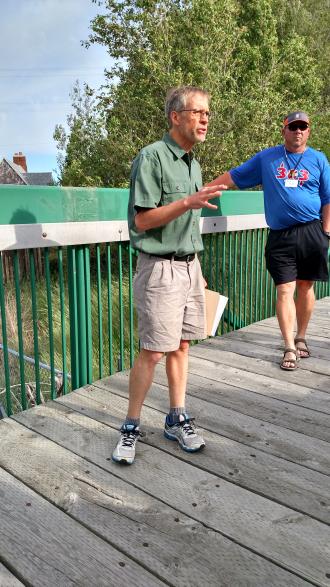
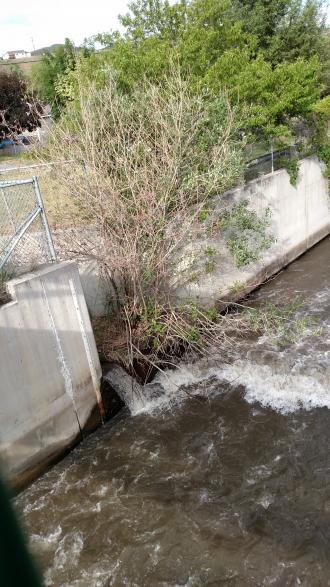
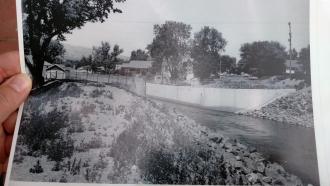
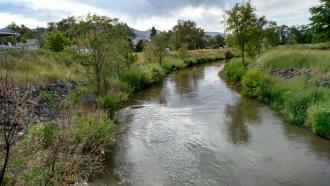
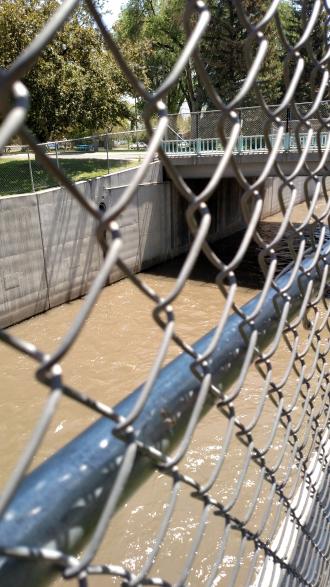
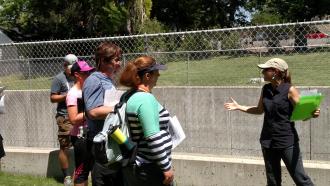
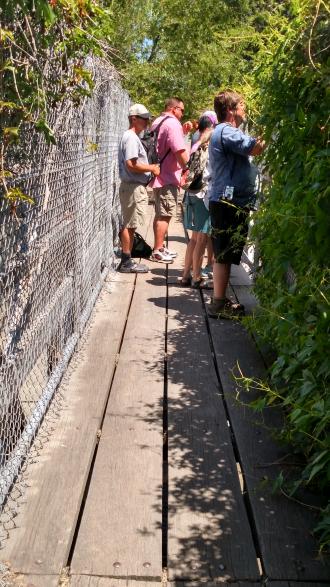
Comments
The only constant is change...
As we learned about the history and saw some proposed changes for the future, I found myself initially resistant to change. Even though I am not from Pocy or had I ever visited that little baseball field before today, considering it being cut in half by a levee seemed, well, like it ought not be done. Then I reflected back to Stuart Park in Chubbuck which has undergone major changes in the past year. I was sad to see the playground where we spent hours playing chase tag as my kids grew up be replaced with a parking lot. The mature trees were cut down and a cell phone tower was installed in one corner. the tennis courts were ripped out and big tire marks cut across the mud like an open wound for months. This past weekend, however, was a real treat because 95% finished, the park has all new facilities including a state-of-the-art splash pad and nearly 100 new trees on the property. The change part was tough, but seeing the end product left me with no reservations about the high quality work that the City and it's stakeholders will complete on behalf of this great Portneuf River ecosystem in which we live.
I always have a hard time
I always have a hard time with change, even if it's for bigger and better.
Portneuf River
Thanks for sharing your experiences with the speakers and expeditions that you encountered. Yes, in one of Miles Project videos it talked about the railroad and how it started in Pocatello. I am not sure if that is when they built the channel that runs through downtown, but I learned it was built for flood control. It seems that the channel needs to be redesigned so itis more appealing to the eye and perhaps if it becomes pollutant free people may see if fish swimming in it someday.
History!
This is awesome Katy, I am so excited to incorporate a little history into our expedtion about what the Portneuf was like and foster that sense of purpose- Why should we learn about this? I am so excited for the fall!
interesting facts
Thanks for the background, I was not familier with most of what you wrote about. What is the purpose of getting the water as quickly as possible to the AF res? It is most certainly an interesting perspective to remember that the contrary to many towns of the time period, Pocatello was driven by the railroad rather than the river.
Thanks!
History and Science
Thank you for making this post. I think it is a good reminder to include history into our science classes. A good life science activity might be to have students gather old family photos of camping spots they have visited and try to see if the location has changed. As an ancestor of Swedish immigrants who started the New Sweden Irrigation District the history of our water usage is very important to me. I do not live in Pocatello but I am sure that the residents that have called the area home find the history fascinating and also it helps provide some ownership to the place they call home.
The Portneuf Is Our Local History
This was my favorite lesson. I loved learning about the Portneuf's history. Kevin Marsh gives a good lecture. I think this could be included in Idaho history to 4th grade students.
Regrets
As a history teacher, this sounds like a day I really would have enjoyed attending.